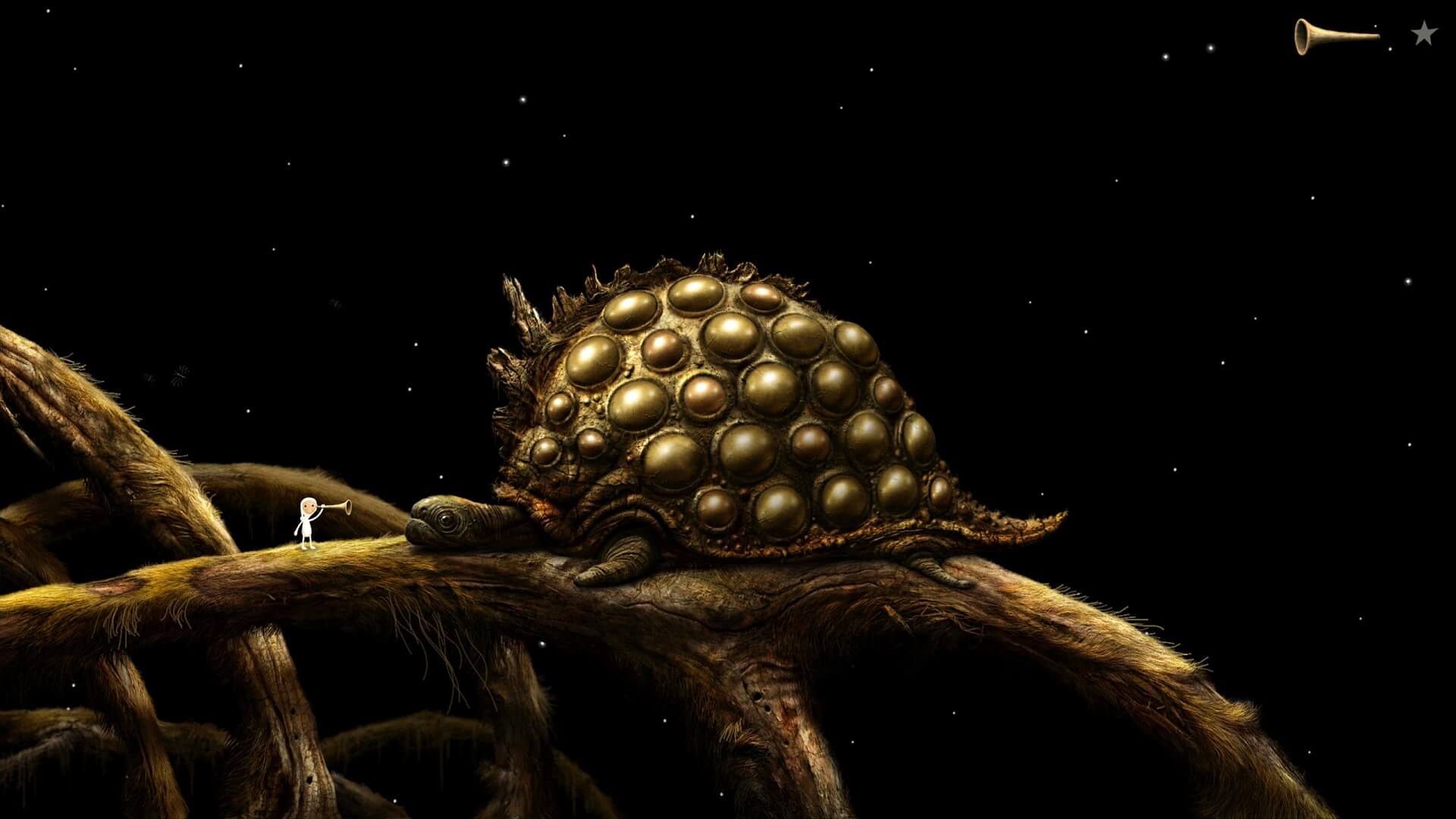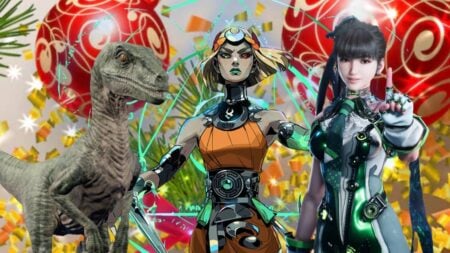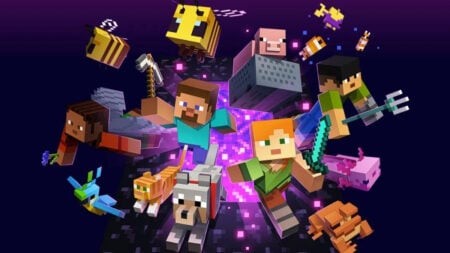Title: Samorost 3
Version Tested: PC
Available On: PC, OS X
Developer: Amanita Design
Publisher: Amanita Design
Genre: Point-and-Click Adventure, Puzzle
Official Site: https://samorost3.net/
Release Date: March 24, 2016
Where To Buy: Steam
Space monks playing space flutes. Bearded woodsmen. Spaceships constructed from plastic bottles and some sort of onion. Monkeys in homemade hot springs. All that and one loyal dog. Samorost 3 is the latest bizarre and beautiful adventure/exploration game from Amanita Design, creators of Machinarium and Botanicula. It does little to innovate or differentiate itself from traditional point-and-click games. However, the intricate art, music, and sound design make for a charming and memorable experience that showcases the best aspects of the genre.
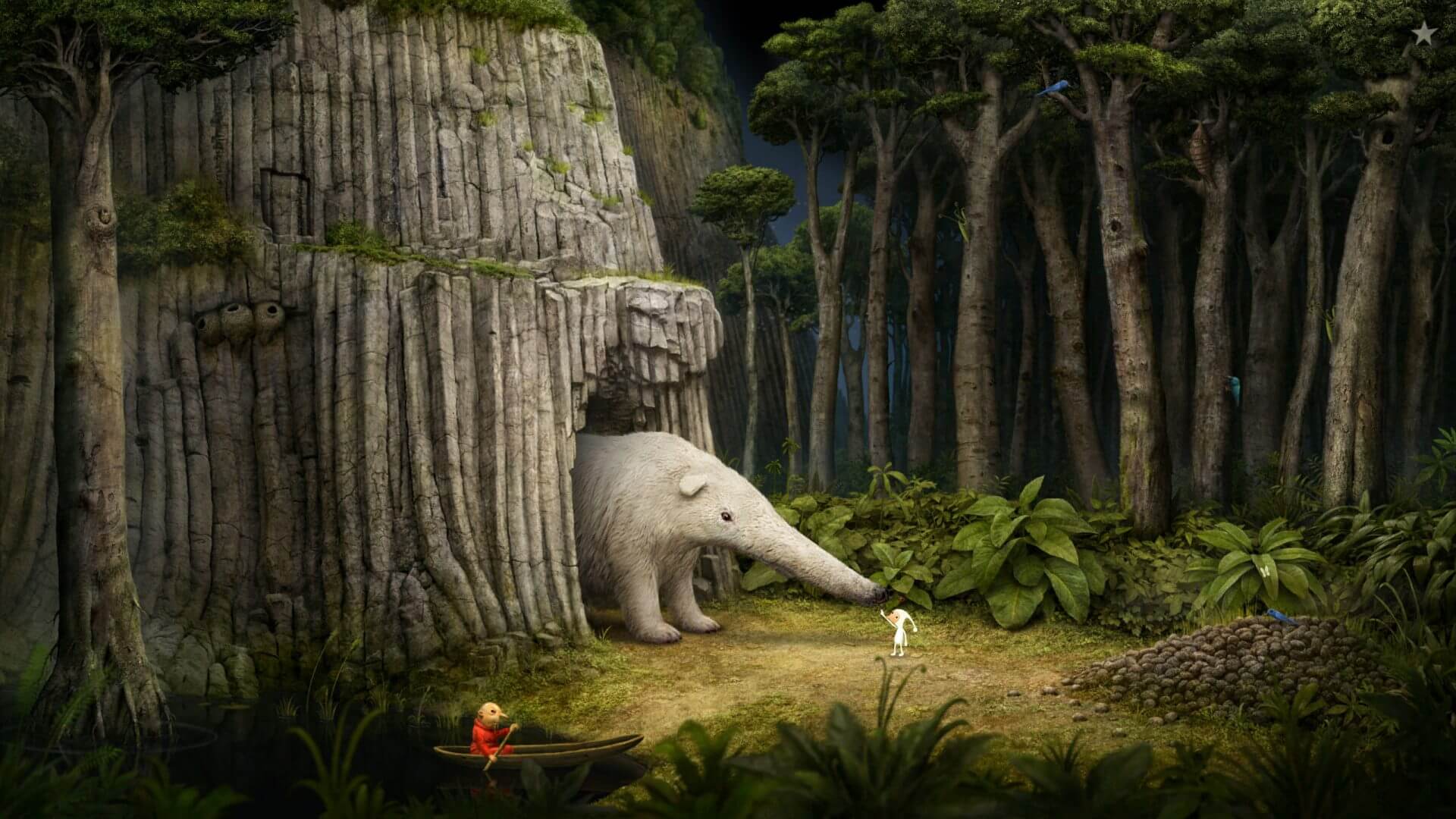
In fact, “charming” is probably the best word to describe Samorost 3. You do not need prior knowledge of the first two games to be swept up into the universe the game provides you with. You play as a gnome who exits his house one day to find a flute has crashed from the heavens into his yard. Using this flute, you must travel around your planet, listening to music and playing it back, solving puzzles, and acquiring objects so that you can build a spaceship. Soon, you begin flying throughout the universe, helping people, solving puzzles, and meeting some extremely odd creatures.
Sure, with Samorost 3, you will encounter some of the typical trappings and issues inherent to the point-and-click genre. It can be difficult to figure out where to go next or what objects you can interact with. Some of the puzzle solutions are out of left field. Unless you are a complete pro, you most likely will need to use the built-in hint system a few times, which never gives you the solution, but nudges you toward it. However, Amanita Design circumvents this issue by making the world of Samorost 3 so engrossing and fun to wander through. This is a game where slow exploration is rewarded, and those rushing towards the end will miss far too much.
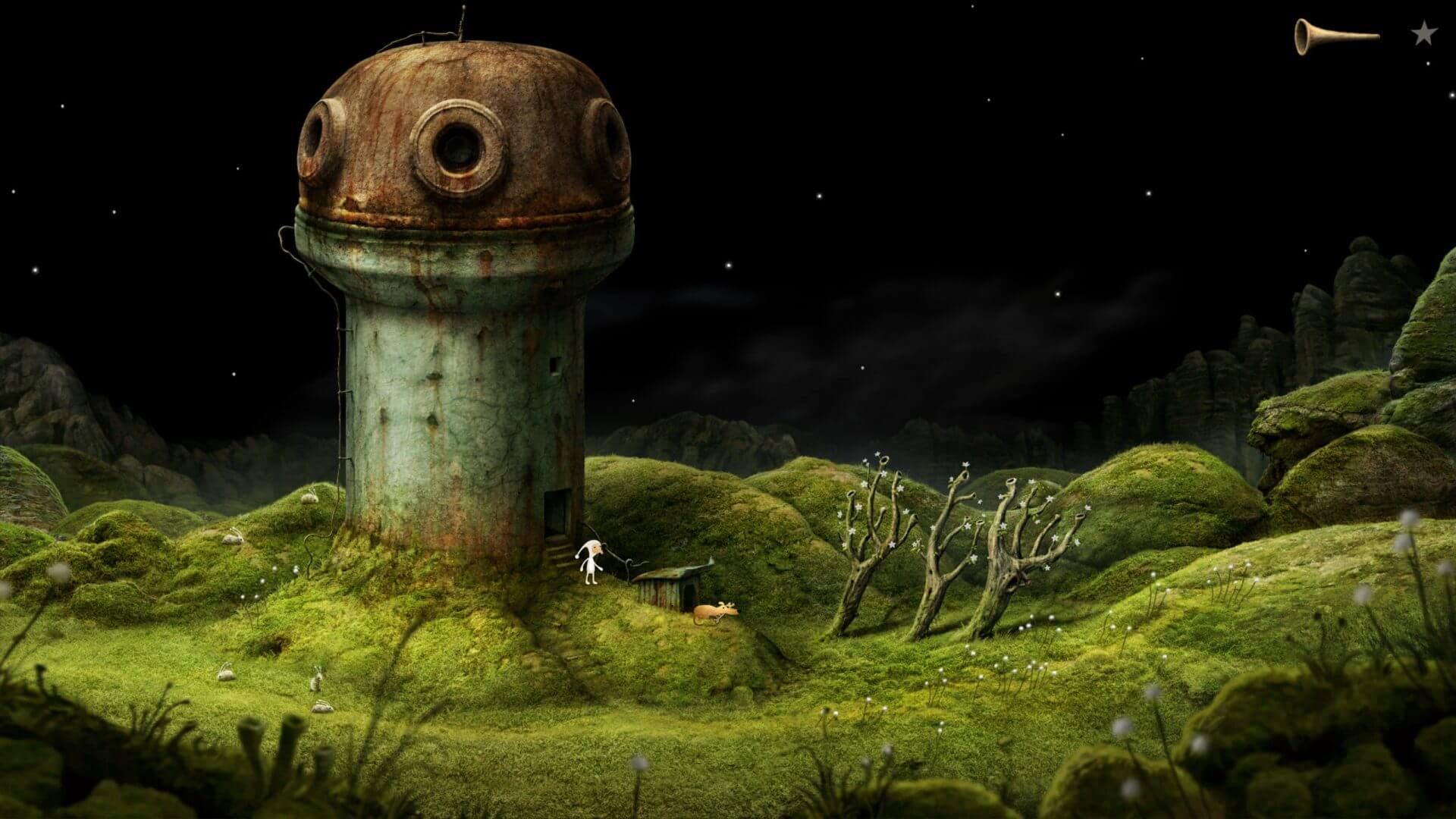
Every world you visit has a unique aesthetic, and all are filled with people-ish characters, fantastical animals, and bizarre insects. Everyone speaks in gibberish and further communicates in cartoonish pictures with one another. Exploration and curiosity are rewarded; not only are most of the achievements earned by doing things other than the main quest, but some of the most exciting aspects of the game are discovered by interacting with the world in strange ways. It would be possible to play through Samorost 3 many, many times and still miss some of what the world has to offer.
Because the sights and sounds of Samorost 3 are such a pleasure to experience, it really hammers home the idea of satisfaction. When you complete a puzzle, you get to experience something new: a new song, a new animation, a new screen, or even a new planet. This reward system is required in every successful point-and-click game. In the LucasArts classic adventure games, it was the humor that rewarded exploration. In Samorost 3, it is the sensory details that push you to beat your head against the wall to solve the mind-bending puzzles.
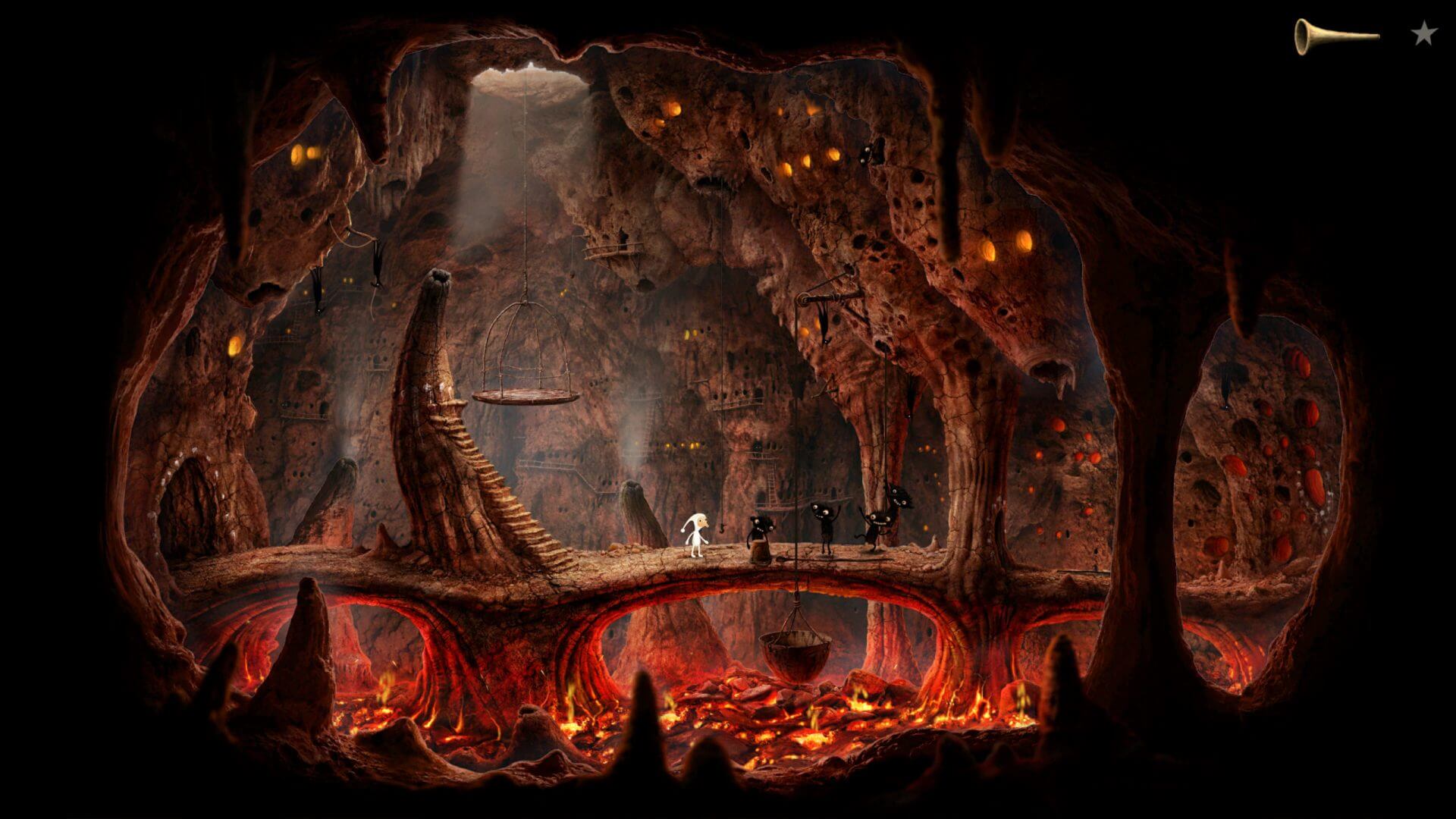
A word about the hint system: it is probably the best I’ve ever seen in an adventure game. When you pull up your big book of hints, crude drawings direct your progress. It never directly tells you what to do, but functions more as reviewing notes taken over a lecture: with a bit of creativity, you can figure out exactly what is intended.
That said, some of the puzzles in Samorost 3 can get very frustrating. You do not have to manage a large inventory, like in some adventure games, but most of the puzzles involve clicking in a precise order. When hunting for solutions, you may have to watch the same animation play out over and over and over. It is beautiful the first time you see it, but by the tenth, you will be sick of seeing those ghosts dancing. Also, since Samorost 3 lacks dialogue and words of any kind, the feedback for what you are missing can be difficult to pick up on. This can lead to pixel hunting; I would find myself rapidly clicking all over the screen, searching for that missing object I needed to complete the circuit and let me move on. These issues are generally paired for the course with most adventure games; you probably know already whether or not this is a gameplay mechanic you can deal with.
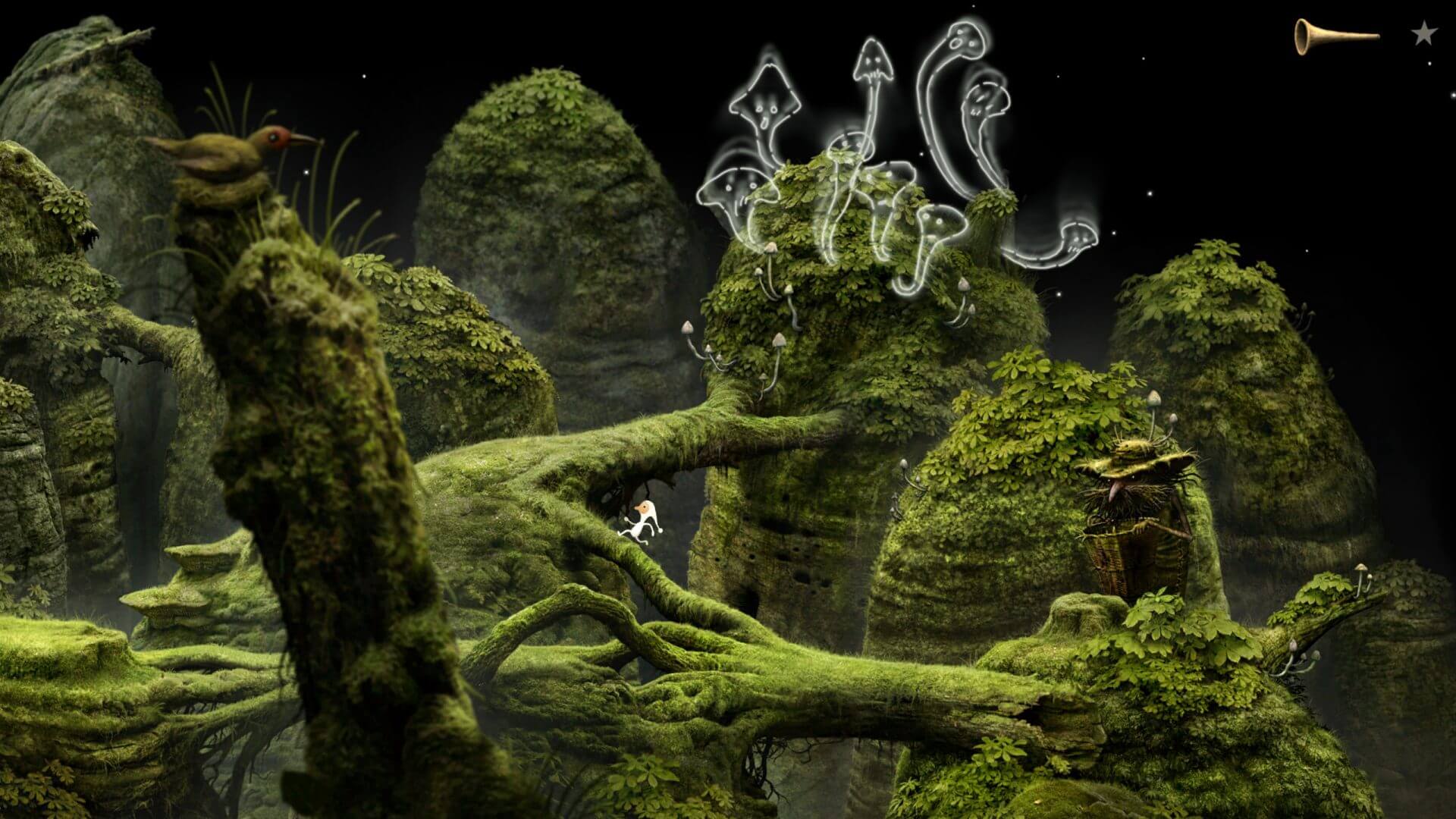
Overall, Samorost 3 is a very well made, albeit traditional, point-and-click adventure. It is a wonderful experience for the senses and is generally a much more relaxed game than what is typically released. On rare occasions, depending on your experience within the genre, you may encounter some exceedingly frustrating moments that may require you to dive for a walkthrough just to make progress. If you are a fan of the genre, you will really dig this one. If you aren’t, I doubt the beautiful music and art will be able to offset those aspects of the genre that you dislike.
- Gameplay: Click things. Things will happen, opening up new places for you to click more things.
- Graphics: Absolutely gorgeous. Minimalistic steampunk meets overgrowing nature. Every screen pops, the animation is excellent, and the characters fascinating. Some objects blend in a bit too much.
- Sound: Enjoy Samorost 3 with some high-quality speakers or headphones. The music and sound design are every bit as enjoyable as the beautiful art style.
- Presentation: A Minimal story that encourages exploration and curiosity. Very little UI or lore to uncover; just a streamlined adventure experience.
[review]

